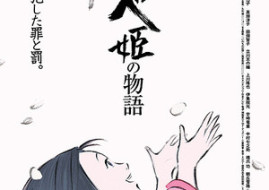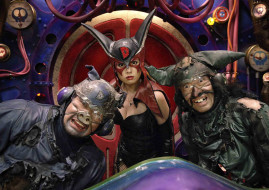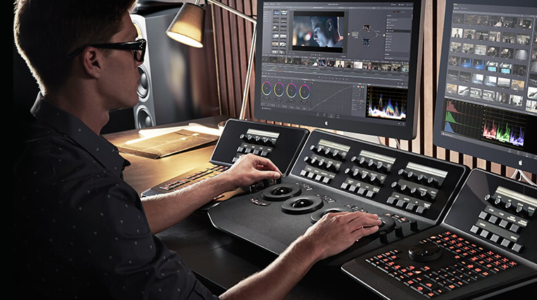Blood Isn’t That Scary
Has Japanese director Takashi Miike made the most violent film ever? He tells all to Steve Rose.
[Guardian Unlimited]
In the same way that Takeshi Kitano crept on to the international stage in the 1990s with a series of distinctive thrillers, the western world is gradually waking up to Takashi Miike. There is a lot more catching up to do – he has directed more than 50 films in the past 10 years, many of them dealing with the more violent activities of Japan’s gangster fraternities. But where Kitano takes an impassive, understated approach to his movies, Miike favours excess. Lots of it. He must be one of the most gifted directors ever to apply himself to the creation of thoroughly tasteless movies, and he regularly goes too far.
Miike is best known in the UK for his adult horror movie Audition, which was praised for its critique of Japanese masculinity. Yet his latest release in this country, Ichi the Killer, required three minutes of cuts by the British Board of Film Classification because of its “extreme sexualised violence”. Miike’s disregard for decency, combined with his free-ranging visual instinct, has almost single-handedly created a new vocabulary of disgusting cinema.
Blood doesn’t politely trickle in Miike’s films: it gushes out in improbable fountains, painting walls and filling up small cars. His trademark point-of-view shots are taken from places other directors wouldn’t dream of: the bottom of a toilet bowl (as a man falls into it after being assassinated); within the ear canal (as it is pierced by a metal spike); even from inside a character’s vagina (don’t worry, it wasn’t real). He has depicted incest, drug abuse, teenage prostitution, violence against women and children, sexual perversion and necrophilia – and that was just in one film, Visitor Q, a “family” thriller that draws on Pasolini’s Theorem.
Miike’s work invariably strays too deep into exploitation territory for widespread approval, but few would deny that his technique can be breathtaking. The opening 10 minutes of his 1999 film Dead or Alive, for example, are a virtuoso combination of music, image and split-second editing, condensing several scenes of set-up into a dense, kinetic visual assault. Should his craftsmanship be invalidated by the fact that this montage incorporates strippers, drug use, knife-throwing, homosexual rape and a man being assassinated so graphically that his last meal ends up all over the camera?
“I always want to challenge new things,” says Miike. In his trademark bug-eyed sunglasses, shaven-headed, chain-smoking, Miike cuts an impressively cool figure. His build is too slight and his smile too easy for him to be threatening, but his demeanour is closer to that of a yakuza boss than a gleeful shock merchant. “People say that my movies are violent. I do not think so. For me, putting so much blood in a movie isn’t really scary. When I watch a regular Hollywood movie like, let’s say, Dirty Harry, where the hero is killing so many people, including just bystanders, and it doesn’t really apply to anything – that’s more horrific to me.”
The violence in Miike’s films is offputtingly extreme, but it is usually far from realistic. It was this distinction that eventually convinced Britain’s regulators to pass Ichi the Killer – an adaptation of a notorious manga comic book about a nerdish assassin caught between rival yakuza gangs. Scenes of violence against women had to be removed, but the rest of its gruesome retinue of torture, mutilation and carnage, they decided, went too far beyond the pale to provoke anything other than laughter.
“I just wanted to be loyal to the fans of the manga. I did not want to let them down,” says Miike of Ichi the Killer. “Visually, I want to try everything. But I believe that every shot of my films really expresses what I think about the story and the character. The most important thing is the story, not the images.”
Full article at www.film.guardian.co.uk




















